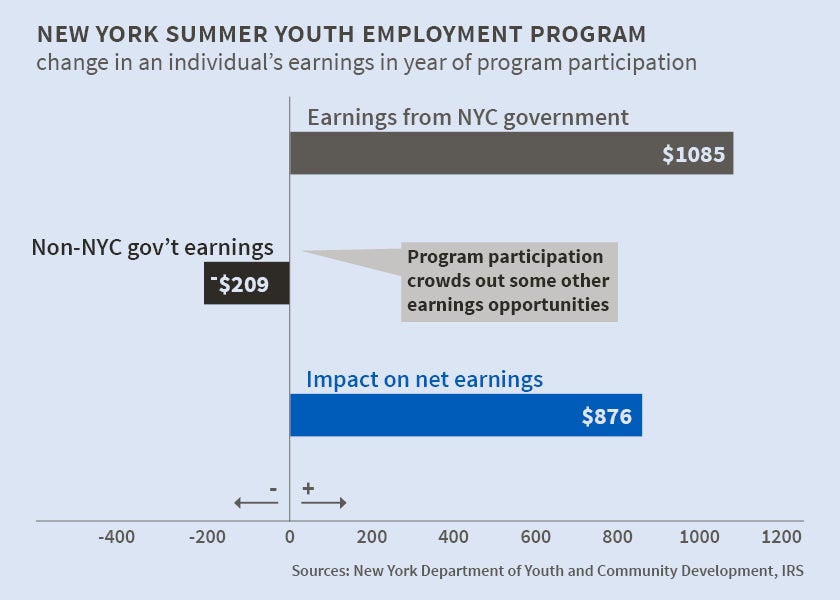Effects of a Summer Youth Employment Program in NYC
Participation decreases the probability of incarceration and mortality, which has important implications for analyzing the net benefits of the program.
Throughout the United States, public employment and subsidized employment programs attempt to support individuals' labor market prospects. In many cases, these programs focus on encouraging youth employment, and summer youth employment in particular.
Three primary justifications are offered for such programs. One is to provide income support to youth and their families through wages earned in the program. Another is to foster summer work experience that could improve future employment outcomes, particularly for disadvantaged youth who would otherwise have low summer employment rates, or improve educational outcomes. Some feel such opportunities might also help to keep program youth involved in socially productive activities and out of trouble, potentially improving outcomes like incarceration and mortality rates.
In The Effects of Youth Employment: Evidence from New York City Summer Youth Employment Program Lotteries (NBER Working Paper No. 20810), Alexander Gelber, Adam Isen, and Judd B. Kessler investigate the effects of summer employment by studying the Summer Youth Employment Program, which is administered by the New York City Department of Youth and Community Development. This is the largest youth employment program in the country. The authors merged youth program administrative data on 294,580 job lottery participants from the period 2005 through 2008 with IRS data on the universe of U.S. tax records, to New York State administrative incarceration data, and to administrative cause of death records from New York City.
The investigators find that youth program participation results in increases in average earnings and in the probability of employment in the year of program participation. Per person earnings average $1085 during the year of participation. There is modest contemporaneous crowd-out of earnings from jobs that are not associated with the program - an earnings decline of $209. Those who won the lottery had a 71 percentage point greater probability of employment than those who did not. Participation causes a moderate decrease in average earnings for three years following the program and has no impact on college enrollment. Participation also decreases the probability both of incarceration and mortality, outcomes that have important implications for analyzing the program's net benefits. The decline in the probability of incarceration is 0.1 percentage points - about a 10 percent reduction relative to the baseline incarceration rate. The decline in the probability of mortality is 0.08 percentage points - about a 20 percent reduction relative to the baseline mortality rate. Under standard cost-benefit analysis, the benefits from the reduction in mortality are very large - certainly at least of the same order of magnitude as the combined costs of the program.
The authors point out that as more years of data from youth program participation accumulate, it will become possible to investigate longer-term impacts of the program on cause of death and arrest experience. They also suggest that it would be of interest to use a randomized design to investigate whether the type of job into which an individual is placed has an effect on subsequent earnings and on career trajectories.
-- Les Picker



